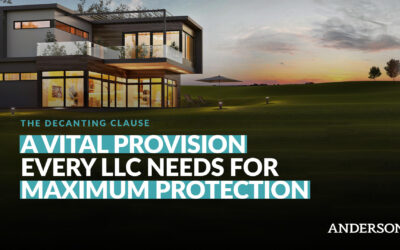
I’m about to share with you a crucial lesson I learned the hard way. In the world of finance and asset protection, I thought I had all my bases covered, but I was in for a rude awakening. My personal bank account got garnished, and trust me, it’s a situation you want to avoid at all costs.
In this blog, I’m going to walk you through the steps to protect your personal bank account using a strategy I wish I had known earlier: a specific type of trust. This isn’t just theory; it’s a real-life lesson learned from a misstep that cost me dearly.I want to make sure you’re safeguarded against the unexpected financial pitfalls that can hit any of us.
Key Takeaways
- Importance of Asset Protection: The author’s personal experience with bank account garnishment highlights the critical need for meticulous management and protection of financial assets.
- Privacy Banking Trusts (PBTs) as a Solution: PBTs provide a robust method for safeguarding personal bank accounts by legally separating the individual from their financial assets, thus offering enhanced security against garnishments and legal threats.
- Key Steps in Setting Up a PBT: Establishing a PBT involves selecting a unique trust name, appointing a trustee, and designating beneficiaries. This setup ensures that the bank account, while operationally normal, gains an additional layer of protection under the trust.
- Flexibility and Integration into Financial Planning: PBTs are flexible and can be adapted for various purposes, making them a crucial part of a broader asset protection and estate planning strategy.
- Proactive Approach and Continuous Learning: The article underscores the importance of being proactive in financial security and the need for continuous learning and updating of asset protection strategies to prevent potential financial vulnerabilities.
Tax & Asset Protection Workshop
Learn about Real Estate & Asset Protection at our next
FREE LIVE STREAM
Navigating Tax Complications: My California Property Sale Fiasco
In the realm of real estate and taxes, every state has its quirks, and California is no exception. A couple of years ago, I sold a piece of property there. Now, if you’ve dealt with California real estate, you might know that they have a unique approach to transactions, especially if you’re using an out-of-state entity. In my case, I held the property through a Wyoming LLC.
When you sell property in California under such circumstances, the state withholds a portion of the sale proceeds. This withholding is their way of ensuring they get their share of what they call ‘blood money’ from those conducting business in the state. Unfortunately, in the whirlwind of transactions and paperwork, I made a critical oversight: I didn’t inform my CPA about this withholding. As a result, when my tax return was prepared, California came knocking, claiming I owed them an additional $10,000. This was bewildering because, in reality, I didn’t owe them this amount.
After receiving a notice from the state, I consulted my CPA, who advised me to pay the amount upfront and then seek reimbursement. His rationale was based on avoiding further interest and penalties. Reluctantly, I followed his advice, but delayed the payment for a few months – it just didn’t sit right with me to pay for something I didn’t owe.
This delay, however, led to interest accumulation, which I hadn’t fully appreciated. And then, out of the blue, the state of California garnished my bank account. One day, I logged into my account to find that funds had been seized without any prior notice. The bank had simply complied with the state’s request, identifying an account under my name and withdrawing the funds.
It was a wake-up call and a harsh lesson in the importance of managing every detail in financial transactions. This experience was the starting point of a journey that led me to discover a powerful tool for protecting personal assets, which I’m about to share with you.
The Critical Oversight: Protecting Your Family’s Financial Assets
My journey into the complexities of asset protection took an unexpected turn when my personal mishap impacted not just me, but also my family. The core of the problem lay in a simple yet significant oversight: an unprotected bank account.
Here’s where the situation got complicated. I’ve always been an advocate for securing assets in LLCs and trusts. It’s what I preach and practice. But, in this whirlwind of asset protection strategies, I missed a crucial detail – one of my bank accounts was left exposed. And it wasn’t just any account; it was an account I had opened for my daughter when she was very young. My name was still listed as one of the owners.
When the garnishment from the state of California was filed against my accounts, Wells Fargo, my bank, did what any bank would do. They scoured their records for any accounts associated with my name. And there it was – an account that was technically mine but in reality belonged to my daughter. Despite its intended purpose, the bank recognized my ownership and consequently, the funds were seized. This action not only impacted me financially but also dragged my daughter into the quagmire of my tax dispute.
This incident was a stark reminder that in the realm of asset protection, no stone can be left unturned. An account opened out of love and responsibility for a child became a financial vulnerability. This is a mistake I think many parents might inadvertently make. The key takeaway here is clear: every account, no matter how insignificant it may seem, must be shielded from potential legal and financial threats.
In the next section, I’ll share how I resolved this issue and the steps you can take to ensure your and your family’s financial safety.
Unlocking Financial Security with Privacy Banking Trusts (PBT)
Having learned a hard lesson from my oversight, I discovered a powerful tool that offers robust protection for personal bank accounts: the Privacy Banking Trust (PBT). This solution is not just a theoretical concept; it’s a practical, tested approach to safeguarding your assets.
What is a Privacy Banking Trust (PBT)?
A PBT is a type of trust specifically designed to enhance the privacy and security of your banking accounts. Unlike traditional accounts, which are directly linked to your personal identity, a PBT creates a layer of separation between you and your assets, making it much harder for creditors to directly access your funds.
Setting Up Your PBT
The process of setting up a PBT is straightforward but requires careful planning:
- 1. Choose a Unique Name: Start by selecting a unique name for your trust. This name should not include your personal name to ensure privacy. For example, I named mine the “Monkey Trust.”
- 2. Appoint a Trustee: You can appoint yourself as the trustee of the PBT. This means you’ll have control over the trust and its assets.
- 3. Designate Beneficiaries: As the creator of the trust, you can also be the beneficiary, ensuring that you benefit from the trust’s assets.
How Does a PBT Work?
Once your PBT is set up, your bank account will be titled in the name of the trust, with you as the trustee. For instance, it would read ‘Clint Coons, Trustee of the Monkey Trust.’ This distinction is crucial because, in the eyes of the law and creditors, the account is not directly owned by you but by the trust.
Why is a PBT Effective?
The effectiveness of a PBT lies in its structure. Since the account is not in your personal name, it’s not immediately subject to garnishment or seizure. Creditors looking to garnish an account will find it challenging to link a trust account, especially one with an unrelated name, directly to you. This setup provides a strong shield against unwarranted seizures.
Implementing a PBT in Your Financial Plan
Incorporating a PBT into your financial plan is a proactive step towards asset protection. It’s about moving your assets from a vulnerable position (personal ownership) to a protected status (trust ownership). This move is not just about avoiding garnishment; it’s about ensuring peace of mind and financial security.
In the next section, I’ll get into the practical aspects of managing a PBT and how it seamlessly integrates into your everyday banking, ensuring both security and convenience.
Implementing a Privacy Banking Trust, Step-by-Step
After understanding the crucial role a Privacy Banking Trust (PBT) can play in safeguarding your assets, the next step is to implement it. This process, while straightforward, requires careful attention to detail to ensure maximum protection and efficiency. Here’s a step-by-step guide on how to set up and implement your PBT.
Step 1: Establishing the Trust
- Choose a Name: Select a distinctive name for your trust that does not include your personal name. This enhances privacy and makes it less identifiable to creditors.
- Draft Trust Documents: Work with a legal professional to draft the trust documents. These documents will outline the terms of the trust, including the trustee’s powers, the beneficiaries, and the purpose of the trust.
Step 2: Appointing Trustees and Beneficiaries
- Trustee Appointment: You can appoint yourself as the trustee, giving you control over the trust assets while maintaining their protection.
- Beneficiary Designation: As the trust’s creator, you can also be the beneficiary. This setup allows you to benefit from the trust’s assets while keeping them shielded from personal liabilities.
Step 3: Opening a Trust Bank Account
- Account Setup: Approach your bank to open a new account in the name of the trust. For example, if your trust is named “Monkey Trust,” the account title would be something like “Clint Coons, Trustee of the Monkey Trust.”
- Transferring Funds: Begin transferring your personal funds into this newly created trust account. This may include your savings, checking, and other liquid assets.
Step 4: Managing Your Private Banking Trust
- Ongoing Management: Regularly review and manage the trust account, just as you would with a personal bank account. Ensure that all transactions align with the trust’s purpose and maintain accurate records.
- Adapting to Changes: Be prepared to make adjustments to the trust structure or assets as your financial situation evolves or as legal requirements change.
Step 5: Integrating PBT into Your Overall Financial Plan
- Coordinate with Other Assets: Ensure that your PBT is integrated seamlessly with your overall asset protection and estate planning strategies.
- Professional Advice: Regularly consult with financial and legal advisors to ensure that your PBT remains effective and compliant with current laws and regulations.
Implementing a Privacy Banking Trust is not just about protecting a single account; it’s about adopting a comprehensive approach to asset protection. By carefully setting up and managing a PBT, you can create a robust shield around your financial assets, ensuring they remain secure against unforeseen legal or financial threats.
In the next section, I’ll detail the practical aspects of managing a PBT, ensuring a smooth transition for your banking needs.
Navigating the Practicalities of a Privacy Banking Trust
Establishing a Privacy Banking Trust (PBT) is a smart move for asset protection, but it’s natural to wonder about the day-to-day practicalities. Let’s break down how a PBT functions in real life, ensuring you don’t face any inconvenience while your assets remain secure.
1. Banking Functionality with a PBT
One of the first questions you might have is about the functionality of banking with a PBT. Rest assured, your banking experience remains largely unchanged. Whether it’s writing checks, making deposits, or online transactions, everything operates as usual. The key difference is in the name under which the account operates.
2. Checks and Statements
A common concern is how checks and bank statements appear with a PBT. While the account is titled under the trust’s name, this doesn’t mean all your checks need to bear the name ‘Monkey Trust’ or whatever name you’ve chosen for your trust. You can instruct the bank to issue checks in your personal name, ensuring ease of use and recognition. The trust name primarily appears on your bank statements, adding a layer of privacy to your financial dealings.
3. Discussing with Your Bank
When setting up your PBT, have a clear conversation with your bank. Explain that while the account is under the trust’s name, you want your personal name on the checks. Banks are familiar with such arrangements and can accommodate your needs, ensuring that your banking experience is seamless.
4. Transitioning to a PBT
Transitioning your existing personal account to a PBT might seem daunting, but it’s a straightforward process. Begin by opening a new account in the name of the trust, then gradually move your transactions and balances to this new account. This transition period allows you to update any automatic payments or direct deposits linked to your old account, ensuring a smooth switch.
5. Maintaining Flexibility
It’s important to remember that a PBT offers flexibility. You’re not restricted to a single trust account. Depending on your needs, you can set up multiple trusts for different purposes, each providing the same level of protection and privacy.
6. The Importance of Proper Setup
Finally, the effectiveness of a PBT hinges on proper setup and management. It’s advisable to consult with a financial advisor or legal expert to ensure your trust is established correctly and aligns with your overall asset protection strategy.
In the next section, I’ll share my personal experience with a Private Banking Trust and the lessons learned, offering insights into how this strategy not only saved my financial assets but also provided a valuable learning experience.
Personal Experience and Lessons Learned: My Journey with a PBT
Reflecting on my journey with the Privacy Banking Trust (PBT), it’s clear that this tool has been instrumental in not only protecting my financial assets but also in providing a valuable learning experience. Here are some key takeaways and advice based on my personal experience:
- 1. The Impact of Oversight: My failure to protect one of my accounts, which inadvertently affected my daughter’s finances, was a stark reminder of the importance of thorough asset protection. It’s crucial to review and secure every account, no matter how small or seemingly insignificant.
- 2. Swift Action is Key: Upon realizing my mistake, I acted quickly to set up a PBT. This swift action helped to prevent further financial disruptions and secured my remaining assets.
- 3. Learning from Mistakes: This experience taught me that even with extensive knowledge in asset protection, there’s always room for improvement and learning. It’s important to continuously evaluate and update your strategies.
- 4. Sharing Knowledge: After navigating through this challenging situation, I felt compelled to share my learnings. By educating others on the importance of a PBT, I hope to prevent similar issues for others.
In closing, I can’t emphasize enough the importance of a Privacy Banking Trust in your financial planning. It’s not just a tool for the wealthy or those in complex financial situations; it’s a smart strategy for anyone looking to safeguard their hard-earned assets. By setting up a PBT, you’re taking a proactive step towards securing your financial future and peace of mind.
If you’ve found this information helpful, I encourage you to explore further. I also invite you to attend my one-day Tax and Asset Protection workshop, where you’ll gain more insights into protecting your assets. This free event is packed with valuable information that can significantly enhance your financial planning strategies.
Remember, in the world of finance and asset protection, being informed and proactive is key. Implement these strategies, stay vigilant, and take control of your financial destiny. If you appreciated this content, and feel free to share this blog with others who might benefit from it. Here’s to secure financial futures for us all!
Free Strategy Session with an Anderson Advisor
Receive a detailed risk assessment to assist in lowering problem areas that could wipe out all of your assets with one wrong move. Speak with an Anderson Professional Advisor to get your FREE Strategy Session.
Limited-Time Offer: ($750 value.)















